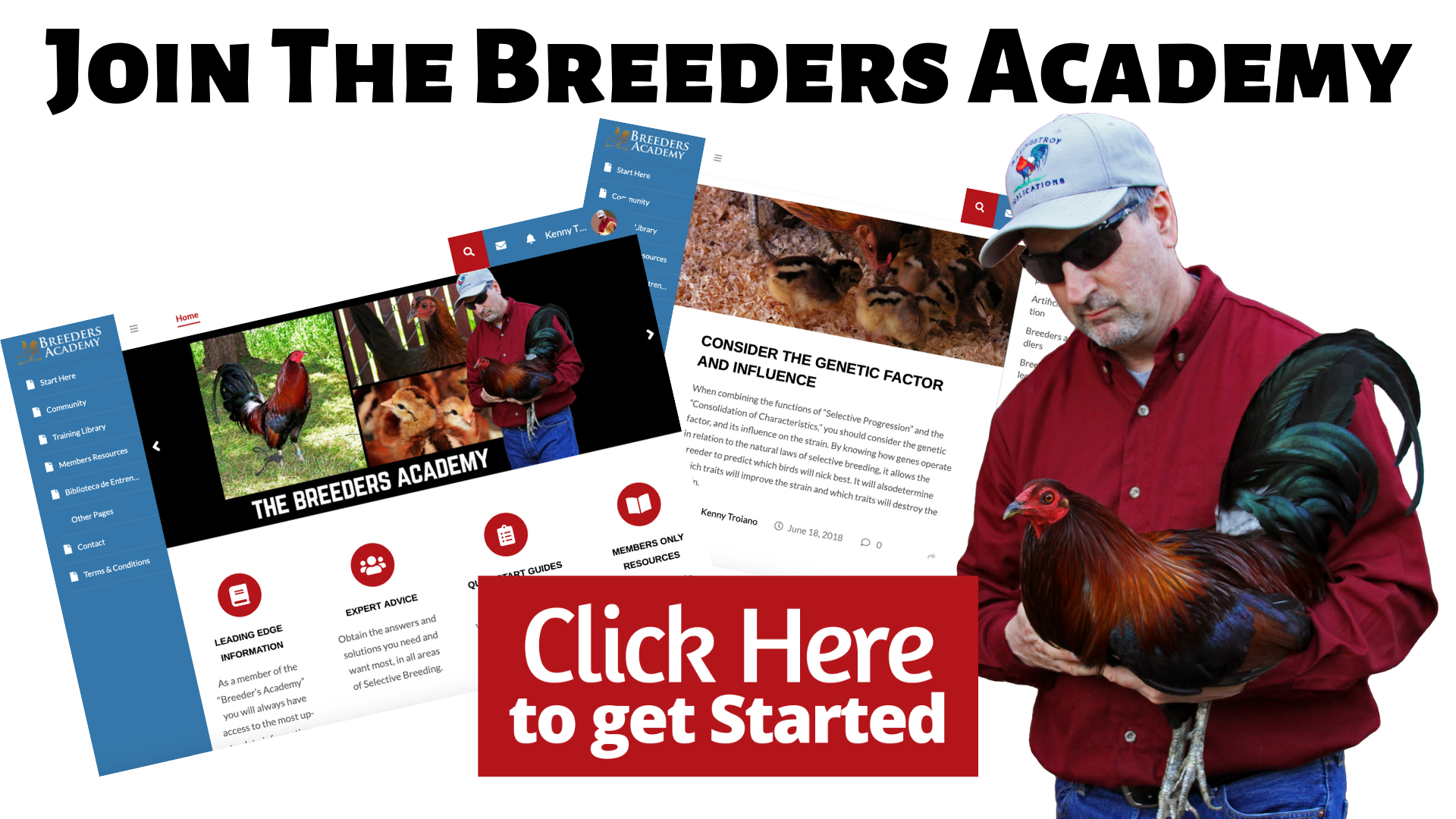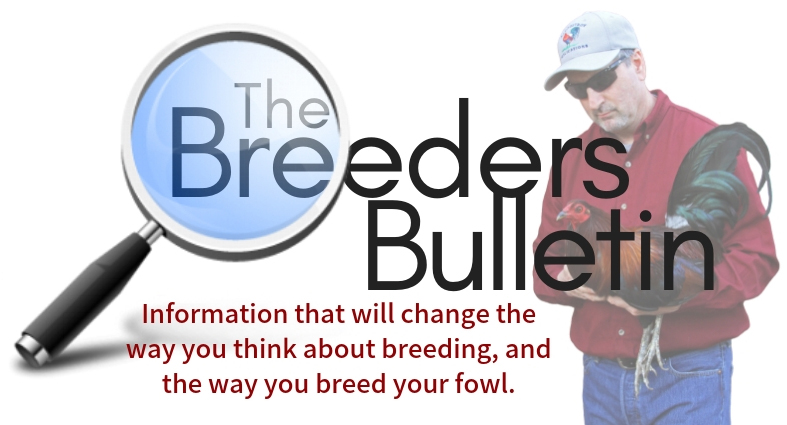Here is a list of steps that you must follow before beginning the process of improving or creating your new strain. Think of this as a cleansing of the blood.
Let’s begin the process of improving your strain. But, first, I have a couple of questions for you:
- Do you have an established strain, or are you creating a new strain from scratch?
- Do you have pure fowl, from an established breeder, or are you starting out with hybrid crosses or mongrels?
If you are starting out with an established strain, great! If not, no worries. We can certainly start where you are with what you have. This is why I created TheBreeders Academy, to get you started on the right foot, whether you are starting with pure fowl or crosses.
Whether you are starting with pure or crosses, we will need to clean up the bloodline. Let’s start by cleaning up your yard and determine the potentiality of your strain.
Before we can talk about breeding and breeding programs, we need to take a good look at your fowl. I’d like to determine what we have to work with and what is possible with what you have on hand.
What I would like you to do first, is examine your fowl, each bird, one at a time. Let’s take a good look at them and see what we have to work with.
The 5 Step Process:
- First, it’s important that you become familiar with the parts of the bird,and what each part is called. When we discuss the various parts of the birds, knowing what they are called allows you to better understand what we are talking about. This is especially important when studying the breeding programs and specialty courses. Breeders Academy Members shouldcheck out a page we call, “Description of Parts.”Here’s the link – https://americangamefowlbreedersacademy.com/description-of-parts/
- Secondly, Cull all sick birds.You cannot create a strain with birds that do not have a natural resistance to disease or express low vigor. Poor health and vigor are a genetic weakness that can be passed to their offspring, and is the number one defect to cull for.
- Next, look for obvious defects.Any bird expressing a defects(s) should be culled. Trust me, this is important. Defects are recessive genes that are passed down to their offspring, and all future offspring. Breeders Academy Membersshould take a look at the program, called “Seeking Perfect.” Become familiar with the defects that exist within our fowl, and cull as necessary. Here’s the link – https://americangamefowlbreedersacademy.com/recognizing-common-defects-and-disqualifications/
- Now, check their conformation of body.There is no trait that is more important to your strain, and the breed, as “Type,” otherwise known as Conformation. If the conformation is wrong, then they lack proper form, and are not good representatives of their breed. Form is related to function. Birds that are not a good representative of their breed should be culled. Breeders Academy Membersshould checkout this link – https://americangamefowlbreedersacademy.com/proper-form-and-function-of-american-games/
- And lastly, I want you to check out their color of plumage.What variety of American Games do you raise? I have a number of varieties listed in the page, called the “Standard of Perfection.” If your variety is listed, check it out, and see how closely your fowl matches the Standard. Breeders Academy Membersshould checkout this link – https://americangamefowlbreedersacademy.com/standard-of-perfection/– Color is important, but I don’t want you to cull off-colored birds yet, but know that through selection and by following our programs, color can be improved. We’ll talk more about this later.
Now that we have culled the defective and substandard birds, let’s look at the family as a whole. Ask Yourself – Do they look uniform (conformation and color)? Are they consistent in all their character and traits (comb type, leg color, feather type and color, eye color)? How is their temperament, are they calm, flighty, or tend to become manfighter)? And lastly, how is their form, function and performance ability?
Okay, this is where the real work begins.Now that we have determined their phenotype/outside – visible traits) and have cleaned up their characteristics, it’s a good idea to determine their genotypic traits.
For example:
- Some traits are desirable, some undesirable.
- Some traits are dominant, some recessive.
- Some traits are sex-linked, some are autosomal.
- And, some traits are based on polygenic inheritance, and some are determined by only one gene, one factor.
Not to worry, The Breeders Academywill help you determine the exact genetic makeup of your strain, and give you a greater understanding of the process of selective breeding and breed more intelligently. Together we will establish a breeding program that will help you to improve and advance your strain to the next level, and create a strain you can be proud of.
These steps will get you started on the right foot. If you have any questions, please contact me at breedersacademy@gmail.com.
To Join the Academy, and take your breeding and your fowl to the next level, visit breedersacademy@gmail.com

